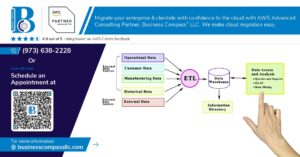You’re still managing data pipelines like it’s 2010? Every time that scheduled Snowflake job fails at 2 AM, another data engineer considers a career change.
Let’s be real—manual data workflow management isn’t just tedious, it’s a liability. In this guide, we’ll walk through the game-changing best practices for automating data workflows in Snowflake that will save your team countless hours and prevent those middle-of-the-night emergency calls.
Whether you’re struggling with inconsistent ETL processes or drowning in maintenance tasks, automation is your lifeline.
But here’s the thing most Snowflake experts won’t tell you: there’s a right way and a wrong way to approach automation. And the difference between them? About a million dollars in wasted resources and technical debt.
Understanding Snowflake Data Workflow Automation
Key Components of Snowflake’s Automation Capabilities
Snowflake’s automation toolkit is seriously powerful. Tasks let you schedule queries, while stored procedures handle complex logic. Streams track data changes automatically, and Snowpipe continuously loads your data without babysitting. These components work together, turning manual headaches into smooth, reliable workflows that just run.
Setting Up the Foundation for Automated Workflows
Configuring Snowflake User Roles and Access Controls
Before you start automating workflows, nail down your security framework. Create specialized roles like DATA_LOADER and ANALYTICS_USER instead of giving everyone admin access. This prevents accidental deletions and keeps sensitive data locked down while your automated processes run smoothly in the background.
Designing Efficient Data Models for Automation
Think of your data model as the foundation for your automation house. Flat tables might seem simple, but dimensional models with proper keys make your automated processes lightning-fast. Don’t skimp on optimization here—poorly designed schemas will come back to haunt your automation efforts when they scale up.
Establishing Naming Conventions and Documentation Standards
Nobody remembers what that randomly named table does six months later. Create strict naming patterns like [business_unit][data_source][entity] for instant recognition. Document everything in a central wiki—future you will thank present you when troubleshooting automated workflows at 2 AM during a production issue.
Implementing Task-Based Automation in Snowflake
A. Creating and Scheduling Tasks for Regular Data Operations
Snowflake tasks are the workhorses of automation. I’ve seen teams struggle with manual updates until they discovered how simple it is to set up recurring tasks. Just define your SQL, set a schedule (cron expressions work great), and boom—your data refreshes while you sleep. The real magic happens when you connect these tasks into workflows that transform your data ecosystem.
Leveraging Stored Procedures for Advanced Automation
Developing Reusable Stored Procedures
Stored procedures in Snowflake are your secret weapon for automation. You write it once, use it everywhere. The beauty? They’re portable, testable, and crazy efficient. Just pack your common data transformations into neat procedure packages and watch your development time shrink. No more copy-pasting SQL across your workflows – that’s so last year.
Integrating Stored Procedures with Tasks
Got your procedures ready? Now link them to Snowflake Tasks for true hands-off automation. Tasks call your procedures on schedule, creating a production-ready pipeline without manual intervention. The real magic happens when you chain tasks together – procedure A finishes, kicks off procedure B, and your data flows while you sleep. Game-changing stuff.
Best Practices for Error Handling and Logging
Nobody likes silent failures. Robust error handling in stored procedures means capturing exceptions, logging meaningful messages, and gracefully handling unexpected scenarios. Don’t just catch errors – document them thoroughly. A well-designed procedure should tell you exactly what went wrong, where, and why. Your future self will thank you when troubleshooting at 2 AM.
Version Control for Stored Procedures
Treat stored procedures like proper code – because that’s what they are. Version control systems like Git let you track changes, roll back mistakes, and collaborate without stepping on toes. Document each procedure with clear headers explaining purpose, parameters, and change history. Teams working without version control for Snowflake code are playing with fire.
Orchestrating End-to-End Data Pipelines
A. Connecting External Data Sources to Snowflake
Building rock-solid pipelines starts with seamless source connections. Snowflake’s connectors let you tap into virtually any data source – cloud storage, SaaS platforms, or on-prem databases. No more data silos! Just configure once, then Snowflake handles the heavy lifting automatically while you focus on analysis instead of infrastructure babysitting.
Scaling Your Automated Workflows
Designing for Performance and Resource Optimization
When scaling Snowflake workflows, smart resource allocation makes all the difference. Use warehouses strategically – size them right for your workloads and implement auto-suspend to avoid idle compute costs. Partition large tables and leverage Snowflake’s clustering capabilities to keep performance high as data grows.
Handling Growing Data Volumes Efficiently
Data volumes explode faster than you think. Implement time-travel judiciously, use appropriate retention periods, and leverage zero-copy cloning for testing environments. Multi-cluster warehouses automatically scale to handle unpredictable query loads, while materialized views speed up common queries without duplicating storage.
Managing Costs in Automated Environments
Costs spiral quickly in automated environments. Set up resource monitors with alerts and quotas to prevent runaway spending. Implement query tagging to track resource usage by department or workflow. Schedule intensive operations during off-hours when compute is cheaper, and regularly audit your storage to purge unnecessary historical data.
Monitoring and Maintaining Automated Workflows
Setting Up Proactive Alerts and Notifications
Ever noticed how the best data teams never seem surprised by issues? That’s no accident. They’ve set up robust alert systems in Snowflake that ping them before small hiccups become big disasters. Custom threshold alerts for failed tasks, unusual processing times, or data quality problems can save your bacon when workflows go sideways.
Real-World Success Patterns
Case Studies of Successful Snowflake Automation
Companies like Netflix slashed data processing time by 70% using Snowflake’s task-based scheduling. Meanwhile, Pfizer automated their clinical trial pipelines, reducing manual interventions by 85% and cutting reporting cycles from days to minutes. These real-world wins show automation isn’t just fancy tech—it’s a game-changer.
Industry-Specific Automation Strategies
Financial firms leverage Snowflake automation for real-time fraud detection, processing millions of transactions hourly. Retailers automate inventory forecasting based on seasonal trends. Healthcare organizations streamline patient data workflows while maintaining HIPAA compliance. The secret? Tailoring automation to your industry’s unique challenges.
Measuring ROI from Workflow Automation
The proof is in the numbers. Track time saved (often 60%+ on routine tasks), error reduction (typically 90%+ for manual processes), and resource utilization. One manufacturing client documented $2.3M annual savings through automated data pipelines. Don’t just automate—measure the impact on your bottom line.
Mastering data workflow automation in Snowflake can dramatically transform your organization’s data operations. From establishing a solid foundation to implementing task-based automation, leveraging stored procedures, and orchestrating comprehensive data pipelines, these practices enable teams to process data more efficiently and reliably. The ability to scale workflows while maintaining robust monitoring systems ensures your automated processes can grow alongside your business needs.
As you implement these best practices in your own Snowflake environment, remember that successful automation is an iterative process. Start with simple workflows, measure their impact, and gradually expand your automation footprint. By following the real-world success patterns outlined in this guide, you’ll be well-positioned to unlock Snowflake’s full potential and drive data-driven decision making across your organization. Take the first step today by identifying one workflow that could benefit from automation, and begin your journey toward more efficient data operations.




















